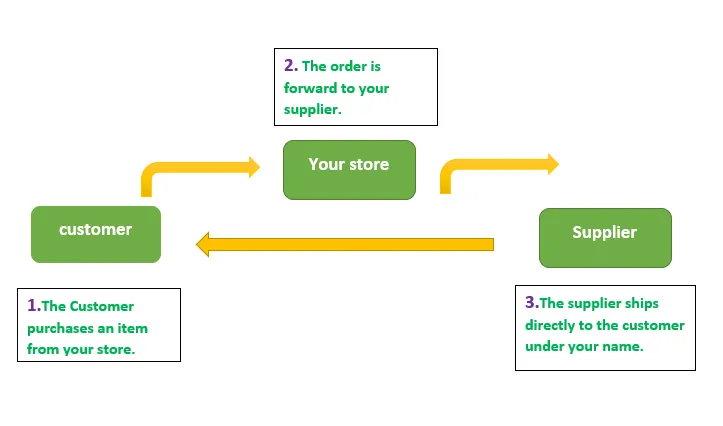How to Sell on Amazon Without Inventory
Selling on Amazon has become a popular and profitable business model for many entrepreneurs. Amazon is a great platform where you can reach millions of customers worldwide. However, the growth of your business depends on the selection of your products and managing inventory. However, the traditional method of selling on Amazon requires you to maintain an inventory of products. Many people hesitate to start selling on Amazon because they are afraid to manage inventory. In online business, individuals must store, pack, and ship the product to customers. In case of any return, you must follow the customer service process.
But what if you need more capital to purchase inventory or want to avoid dealing with the hassle of managing inventory?
This article is for you and will help you to sell on Amazon without inventory. Here I will share some ways to sell on Amazon without holding stock. So, take advantage of every method. This blog post will help you grow your e-commerce business without keeping in-house stock.
Amazon FBA (Fulfilment By Amazon)
FBA is the most popular method of selling on Amazon. In this model, Amazon is responsible for your products from pick up to dispatch. You have only to source products and send them to the Amazon warehouse. If the order comes from the customer side, Amazon will pick, pack, and ship the products to customers within a specific delivery time. If a customer returns any product, Amazon accepts it to satisfy customers. Amazon’s warehouses are located across the country and around the globe, which means that products can be delivered quickly to customers. For this seller no need to worry about managing inventory or shipping.
For this, you need to create your seller account, list the product you want to sell on Amazon, and send your inventory to the Amazon warehouse. While creating a listing, you must choose the option of Amazon FBA.Amazon charges storage and shipping fees, which are often lower than if sellers tried to handle these tasks independently.

Pros and Cons of Amazon FBA
| Pros | Cons |
| On-time and free delivery to customers | FBA and Storage fees can be high |
| Helps sellers to increase their visibility and sales on Amazon | FBA takes care of all the logistics, which saves you time and resources. |
| Give a chance to win the buy box | You also have to compete with other FBA sellers |
| Give support to customers for your product’s return and refund | You must follow strict rules for FBA inventory, such as size and weight limits. |
| FBA takes care of all the logistics, which saves your time and resources. | If you violate any rules, Amazon can suspend your account. |
Dropshipping
Dropshipping is the second most popular method to sell on Amazon without Inventory, where the seller does not hold the inventory of the products. Even in this method, the seller doesn’t need to purchase inventory because he works as an agent between supplier and customer. You have to work only as a bridge to transfer customer orders to a third-party supplier, who then ships the products directly to the customer.

Pros and Cons of Dropshipping
| Pros | Cons |
| You can start with lower cost because there is no need to purchase inventory in this model. | Low-profit margin because you buy a product from the supplier only when you need |
| You won’t need to worry about holding and managing inventory | You rely on your supplier for fulfilling orders, which may lead to customer dissatisfaction |
| It allows you to test different products from different niches | Risk of delay in shipping or any product issues because you are not physically handling |
| You can run this business from anywhere in the glob | You have to face more challenges from the customer and supplier side |
3rd Party Logistic
People are also selling on Amazon without inventory by using 3PL services. If you cannot find an Amazon warehouse, think about 3Pl (3rd Party logistics). First, we determine the products and our target audience. Then, we select the third party’s warehouse by considering factors such as Storage capacity, shipping times, rates, location, and reputation of that 3PL. You also have to integrate your online store with their platform. You send inventory directly to the 3PL provider’s warehouse. This will store your product, pick, pack, and send it to the customer after getting any order.
Pros and cons of 3PL
| Pros | Cons |
| It gives benefits to the seller for large-scale business | 3PL services can be expensive if you are doing small business |
| You can focus on other areas of business by saving time | You have to rely on 3PL Providers for customer services |
| 3PL picks, packs, and delivers the product to the customer after receiving the order. | You need more control over your business, which can create further issues like delivery delays, communication gaps, etc. |
| It can scale up your business quickly. | You have to depend on a specific region. |
Digital Products
This method is also known as POD (Print-On-Demand), in which individuals can sell on Amazon without keeping in-house stock. Using this, you create a product’s design in categories such as T-shirts, Polos, pants, coffee mugs, Water bottles, Phone Cases, and many more. You must partner with a print-on-demand service to produce and ship the products when a customer orders them.
The benefit of print-on-demand is that you don’t need to invest in inventory or equipment and can offer various products. However, you’ll need to invest time and effort into creating unique designs that appeal to your target audience. Here I will discuss some of the pros and cons of using POD.
Pros and Cons of POD
| Pros | Cons |
| There is no need to print or design in large quantities. | Competition is high |
| There is less risk of overstocking which prevents you from financial loss. | Not sure whether to gain sales |
| You can set your price according to yours. | The commission fee is high. |
| You can start even without the experience of e-commerce business. | Limited customization options |
Affiliate Marketing
Affiliate Marketing is another way to earn online without inventory. In this process, you advertise someone’s product on your website and sell it on Amazon through an affiliate link. If someone clicks on that link and buys it, Amazon will give you a commission against that product. You can promote products through your website, blog, or other social media platforms to gain a large audience. The earnings depend on the sales velocity of your advertising product.
Pros and Cons of Affiliate Marketing
| Pros | Cons |
| Sometimes, Amazon also changes its commission structure. | Low commission rates on some products. |
| No initial cost is required to start Amazon affiliate marketing. | It requires time to gain traffic and sales. |
| Amazon is a reputable brand that can increase your website’s trustworthiness. | Sometimes Amazon also changes its commission structure. |
Conclusion
In conclusion, Selling on Amazon without keeping inventory is a viable and well-paid business that wants to start an online business worldwide. However, it is important to find a verified and reputable supplier, monitor the product quality, and ensure on-time delivery to win customer satisfaction. By following all these practices and market research, you can build an eCommerce business on Amazon without holding any physical stock.
